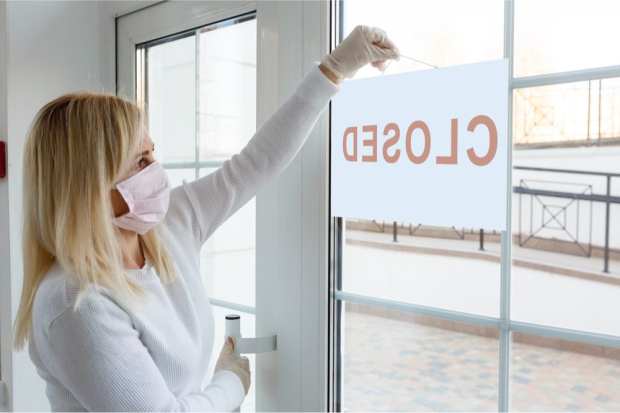Looking Back — And Ahead At What’s Next — As PPP Runs Dry

And just like that: No more. Not now. For the time being, anyway.
Small business owners have tapped into, and exhausted, the $349 billion Paycheck Protection Program (PPP) offered through the Small Business Administration (SBA) as part of the federal coronavirus relief package.
The program went live April 3, amid a bumpy first few days marred by technical glitches, and as of Wednesday evening (April 15) the program had run out of money, extended across more than 1.4 million loans.
As reported by The New York Times, there are negotiations in place, via Treasury Secretary Steven Mnuchin and Congressional legislators over an additional $250 billion in loans that would be extended to small and medium-sized businesses (SMBs).
For the time being, as reported, the SBA’s own website noted the inability to “unable to accept new applications for the Paycheck Protection Program based on available appropriations funding. Similarly, we are unable to enroll new PPP lenders at this time.”
As to just when new funding will become available:
As reported in the Independent on Thursday (April 16), U.S. House Speaker Nancy Pelosi has said that there may not be another funding round until later in the month. Pelosi and Democrats are reportedly angling for as much as $60 billion of the estimated $250 billion in additional loans to be earmarked for financial institutions classified as “community development financial institutions” that would street funds to smaller firms that do business in underserved communities.
The fact that the money ran out so quickly speaks to just how widespread, and deep, the financial pain being felt by these firms, with fewer than 500 employees, extends.
To get a sense of the difficulties: As noted in the latest PYMNTS “Main Street on Lockdown,” the average SMB expects to run out of cash as soon as two months before the coronavirus pandemic ends, and that projection assumes that these firms have (or will receive) government aid.
The sentiment among the more than 500 SMBs surveyed showed that the average SMB — across all segments — stands to continue operations for 97 days, with aid in hand.
But then again, the PPP is closed to new activity, so it may be more apt to judge the responses of firms going without aid. Those companies, we found in the most recent data, expect to survive a mere 37 days.
A total of 32 percent of firms queried on April 6 said they were “unsure” they could survive, while another roughly 25.7 percent said their position was “unstable.”
A standout subset here is that retail SMB owners feel increasingly uneasy about their operating positions, as 28.3 percent said that they felt “sure” they would not survive (as of April 6); that tally had been 17.1 percent on March 24. Retailers said they would survive 45 days without aid, 105 days with financial help — and yet the COVID-19 pandemic is expected by those same firms to last 187 days.
Overall, reducing employee payroll has been the key way SMBs have been battling the impact to their bottom lines. It’s interesting to note that just one third of SMBs applied for government aid, which would have included the PPP loans. But that percentage pales slightly compared to the 38 percent who said they had laid of staff to help with cash flow shortages. Technology SMB owners appear to be the most likely to reduce their employee payrolls, with 54.8 percent having done so as of April 6.
We found that manufacturing firms were among the most likely to have applied for PPP loans, with nearly 41 percent having done so between the dates of April 3, when the program went live, and April 6, the date of the survey.
And now the gates have been closed, at least for a bit. Though 1.4 million loans had been approved through the PPP, there are tens of millions of SMBs dotting main streets across the U.S. — and as the economic slump deepens, the cash drain will of course continue. What comes next is far from certain.
